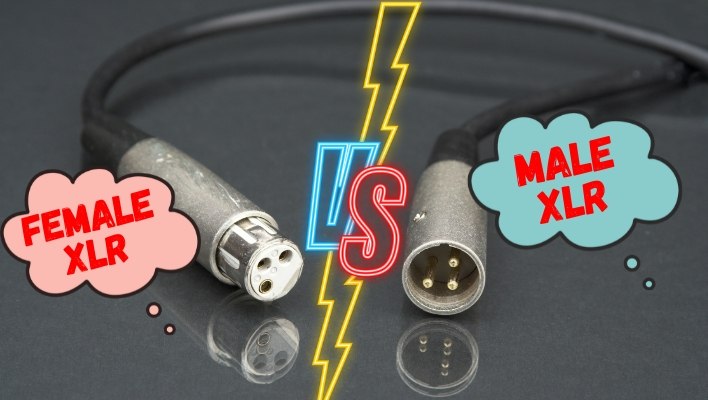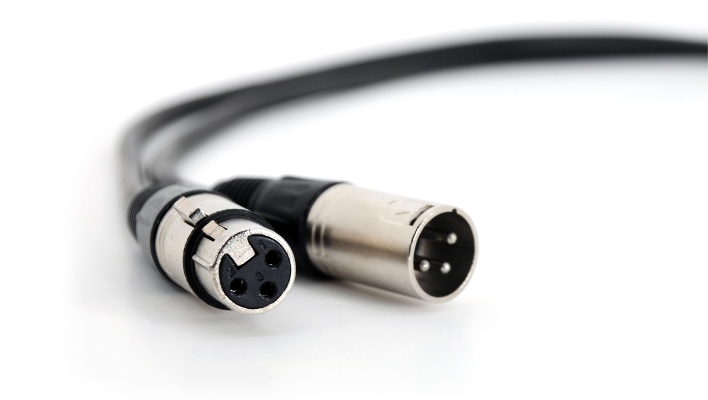Connecting two audio devices requires specialized skills and experience. Flaws in the connection can result in poor sound quality due to interference and the use of the wrong cables. If you are setting up an audio connection, you need to consider a number of factors to know which devices and connectors to use.
One of the handy things that you need to create solid audio connections is an XLR connector. An XLR connector is an electrical connector widely used in video and audio electronic cabling applications such as analog sound equipment and microphones. They are an ideal alternative to conventional RCA connectors.
One of the simplest ways of knowing you are dealing with a male or female XLR connector is by looking at the number of pins. Ideally, the XLR connector has anywhere between three and six pins or prongs.
What Does the R in XLR Connectors Stand for?
This is arguably one of the most common questions we get from our readers. The letter R in XLR stands for External Line Return. These form electric connectors are widely used in installing professional stage lighting and video and audio equipment.
History of XLR Connectors
The XLR connector design was borrowed from the Type O connector that ITT Cannon widely made. This connector had a unique oval shape design, and its receptacle had three prongs. It also had a latch-locking mechanism that enabled it to connect strongly with different audio devices.
The first connectors were referred to as X-series and didn’t have a locking mechanism. The locking mechanism was later introduced in 1950. Consequently, the name was changed to XL series connectors.
Later in 1955, the female connector was redesigned to include a rubber insulation housing that covered the female contacts. In the audio industry, virtually all connectors have male and female connectors. The female XLR connection has a ground pin that completes the connection by coming into contact with the male XLR connector.
This mechanism helps to reduce noise when the male and female connectors come into contact. It also makes it possible for technicians to create the connections even during live hot-plugging or swapping of wires. No noise is heard through the speakers as the switch is made, such as the case with the RCA connectors.

Male XLR Connector vs. Female XLR Connector
A male XLR connector is the output, while the female XLR connector is the input. The female XLR connector is used when the audio signal is received, such as on the input of a mixing desk. In this instance, you need to have a Male XLR connector on one end and a female XLR connector on the other end for attachment to the microphone and the mixing desk.
One of the main differences between male and female XLR connectors is that the male connectors have a solid pin that serves as the center conductor. This is one of the main reasons why it’s commonly referred to as a plug by technicians.
On the other hand, the female connector center conductor is a hole that accommodates the male pin. It is usually referred to as a jack, and the male XLR connector pin has to be inserted into the female XLR connector hole for the connection to be complete.
Apart from male and female XLR connectors, there are other types of XLR cables in the market. They include the following;
- Balanced XLR cables: This cable has both male and female connector terminals. Each terminal has three pins that connect the wires in the cable.
- Unbalanced XLR cables: This cable is made up of two conductors/wires. One wire is for the sound signal and the other serves as ground.
- Stereo cables: They are 3.5 mm cables used to connect audio devices such as MP3 players, DVD players, and TVs to multimedia audio receivers such as headphones and microphones.
- Mono cables: These cables are used to connect acoustic-electric guitars and single-pick guitars to audio output devices. They have only two conductors, the tip and sleeve.
When selecting an XLR cable, always check the type of connector on each end before buying to know whether it’s suitable for your intended connection. Essentially, you need to consider the type of audio signal to be transmitted and the length of the cable.
What is the Main Difference between Male and Female XLR Connectors?
As an electrician, you should know when to use a male or female XLR connector. The first thing to note is that mating interconnects have the same characteristics: size, number of pins, and configuration.
Secondly, the male connector has one or more pins sticking out. The female XLR connectors have holes that receive or house the male XLR connector pins. Carefully look at the construction of the connector to know whether it’s a male or female. This determination will help you know which end of the cable to insert into the audio equipment.

Factors to Consider When Buying XLR Connectors
When shopping for XLR connectors, it’s imperative to consider the equipment you will use with the connectors. For example, if you are using a microphone, you will need a different cable from the one you use in a guitar amp. Also, ensure that the XLR cable has a male connector on one end and a female connector on the other.
Confirm that the connectors are in good condition to establish a strong connection between the amp and the microphone. Otherwise, the sound quality will be poor if the connection is lost or incomplete.
Another factor you need to consider is the quality of the XLR cable. You won’t achieve the desired sound quality if the connectors are in good shape but the cable is in poor condition. Your best bet is a cable made from high-quality copper.
While checking the cable, evaluate the amount of shielding around the wire as it protects the sound signal from noise and interference during transmission. This step is critical if the cables are to be installed in a noisy environment or the sound signal is to be transmitted over long distances.
Final Thoughts
The quality of the XLR connectors and the cable will determine the sound signal quality and how well the signal is transmitted from the input audio equipment to the audio equipment. If you’re unsure about a particular brand of XLR connectors, don’t hesitate to contact the support team if you need more clarification to make an informed decision.
